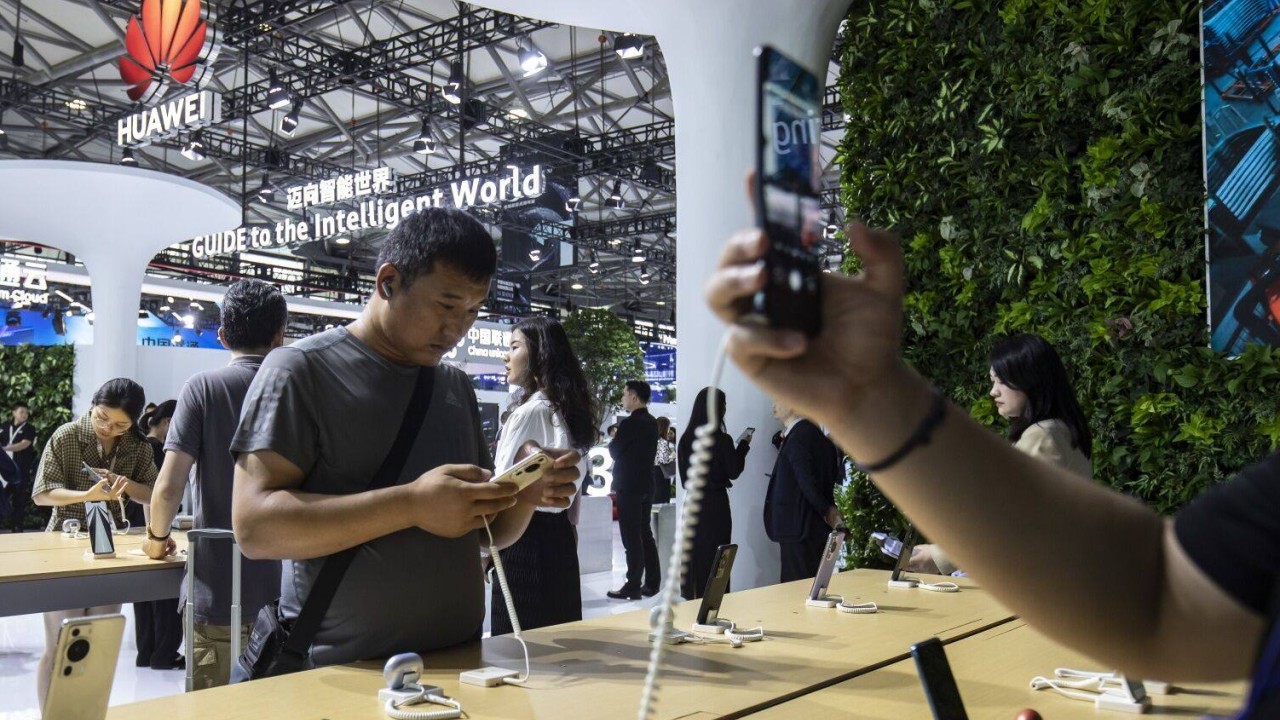
China’s GDP growth reached a lower-than-expected 6.3 per cent last quarter, when retail sales gains fell back to 3.1 per cent in June – down from 18.4 per cent in April and 12.7 per cent in May.
Oppo retained the No 1 ranking in China with a 17.7 per cent market share in the second quarter, followed by Vivo with a 17.2 per cent share and former Huawei budget smartphone brand Honor with 16.4 per cent. All three vendors, however, saw a decrease in year-on-year growth in the same period
By contrast, Apple recorded 6.1 per cent year-on-year growth last quarter, when it took the No 4 spot on the mainland with a 15.3 per cent share.
“Gloomy consumer demand is not the only challenge now for the top-tier vendors [in China], as Huawei has made a comeback and potentially triggered more competition in the high-end [smartphone] segment,” said Will Wong, senior research manager for client devices at IDC Asia-Pacific.
Huawei reached China’s top-five smartphone vendor ranking again by achieving a tie with Xiaomi Corp, with both firms cornering a 13 per cent market share last quarter, according to IDC. But Huawei posted 76.1 per cent growth, while Xiaomi recorded a 17.5 per cent decrease.
Shenzhen-based Huawei’s comeback, according to IDC, was achieved through “a better product launching pace, as well as the favourable sales performance of its P60 series and foldable Mate X3 model”.
IDC’s Wong expected “more intense rivalry” between the top-five vendors during the new product launch period in the second half and the Singles’ Day shopping festival in November.
In a separate report released on Thursday, research firm Canalys indicated that the global smartphone market showed a slowdown in its decline last quarter, when total shipments fell 10 per cent to 258.2 million units.
“The decline in the global smartphone market has once again narrowed, helped by an industry-wide inventory reduction and signs of demand recovery in certain regional markets,” said Amber Liu, an analyst at Canalys. “We anticipate a moderate decline in the global smartphone market in 2023.”
Samsung Electronics, Apple, Xiaomi and Oppo topped the global vendor rankings in the second quarter, according to Canalys.
Chinese budget smartphone vendor Transsion Holdings was the world’s fifth-largest vendor in the same period, according to Canalys data. It showed that Transsion was the only one among the global top five last quarter with positive growth at 22 per cent.
Despite lingering weakness in the global smartphone industry, foldable smartphones have become one of its brightest market segments.
Worldwide shipments of foldable smartphones are expected to surpass 100 million units by 2027, led by Samsung and Apple, according to a report by Counterpoint Research on Wednesday.
While foldable smartphones is still considered a niche segment, the success of Samsung and various Chinese vendors in launching new models that target the high-end of the market could see competition from another major player in the industry.
“We are looking at 2025 as the possible year of iPhone’s foldable debut, which could provide another growth spurt for the segment,” Counterpoint analyst Jene Park said in the report.

